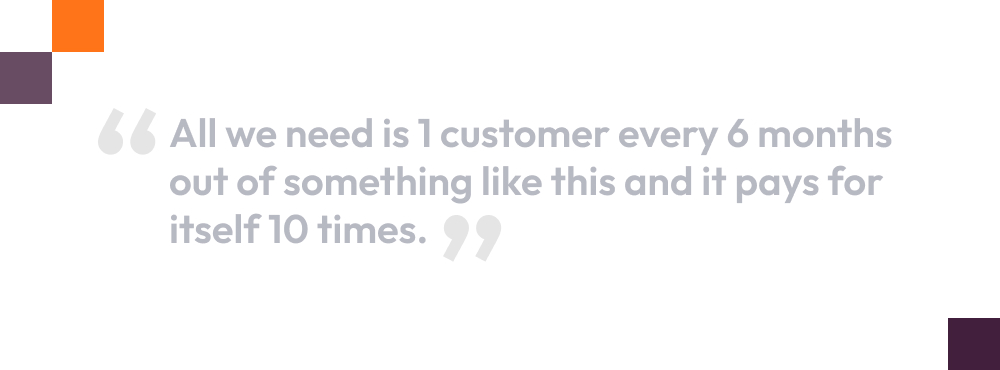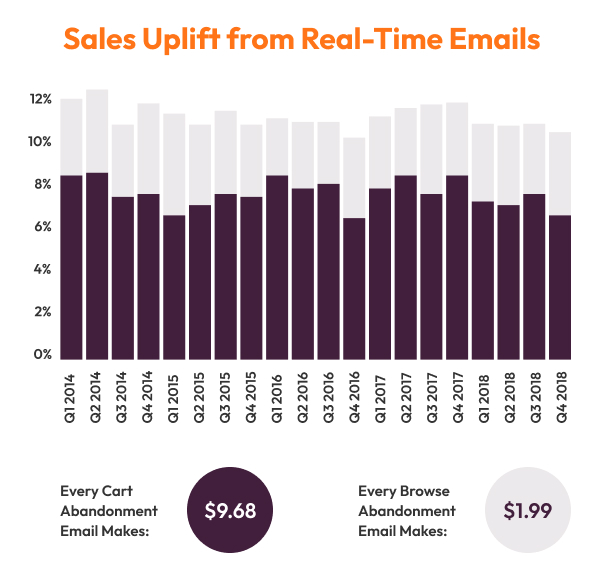The customer is always right. It’s an old adage that verges on being a cliché. There is a good reason why it does endure as a mantra for business; it’s still true. For businesses of all shapes and sizes, it’s critical to listen to customers. More than that, it’s vital to keep their needs at the heart of all decisions. That doesn’t change if your interactions with customers are online rather than in person.
According to a recent study by Nextiva, brands are viewed more favorably by 77% of consumers if they proactively invite and accept customer feedback. For this reason, it’s important to integrate your copy to give users a channel to communicate to you. Or more specifically, communicate how you’re doing aka customer feedback.
All businesses need to keep channels of communication with their customers open. The way they can do this is by collecting client feedback. This is crucial in helping firms to improve their product or the service they offer customers.
Another way customer feedback is useful is to help generate additional sales. When you look at a movie poster, book jacket, or website you’ll see positive quotes from reviewers. Reviews catch the eye and persuade people to take action. Used intelligently, customer feedback will improve your conversion rate dramatically.

You’ll find all the advice and information you need for the correct use of customer feedback below. That includes the different ways to use the feedback and where best to deploy it. Before that, it’s worth taking a moment to explain what we mean by customer feedback and how you can get it.
What is customer feedback & how can you get it?
If you use a product or service, you have an opinion about it. Many customers keep those opinions to themselves. Some people will organically choose to share them with the company. Other times, you need to engage the customer to get those opinions.
Customer feedback can be very useful to a business. We use it at the SEO company that I co-founded with my partner to promote our analytics services and showcase the results that we’ve got for our clients. This helps us to increase our inbound conversion rate which is important as we operate in a competitive vertical.
The feedback helps us improve our product offering and streamline customer service processes. It can undoubtedly do the same for you. But first, you need to gather customer feedback. There are 5 different channels to explore:
- Reviews – Many sites let customers submit product and service reviews. They sometimes have a dedicated review section or use a third-party review app. Often, customers will be invited to provide a star rating. That will be alongside leaving individual comments about their experiences.
- Email Questionnaires – Email questionnaires are a way of seeking customer feedback more directly. Firms can send a personalized email to customers post-purchase. The email asks them to share their thoughts on their experience or leave a review. They can ask if a product met expectations or if they would recommend the company to a friend. You might want to do a lot at the same time to follow up on customers after they made a purchase. This outreach can be part of an email series or even just one well-crafted email that serves more than one purpose. This article has a few different examples of how you can collect testimonials.
- Social Media – Forward-thinking firms use social media as an engagement channel. It’s a great way to interact with customers and prospects. It can also be a useful channel to gather customer feedback. Many people will voice their opinions via social media without being prompted to, and not only positive feedback. Companies need to monitor their channels to see what customers are saying.
- Search Directories – Customers may also share reviews on search directories or review sites. For example on Google My Business or TripAdvisor. For some industries, this is more common than others. Review sites can be a good source of unbiased feedback. Customers have shared their thoughts without being asked by the company directly.

- Popup Surveys – It’s possible to have a customer survey pop up on your site for a visitor to complete then and there. Many sites set these surveys to appear post-purchase. They might also pop up when a visitor returns to the site for a second visit. The format of the surveys and the questions asked can be tailored to each individual site.
How to convert raw feedback into useful copy
All the above channels can be used to collect raw feedback from customers. The first thing to do with that feedback is to act upon any negative comments. You’ll want to identify any recurring problems or issues raised by more than one customer. Only then will you be able to solve the issues for them. It may also serve you well to contact the unhappy customers and tell them the steps you’ve taken.
Then there is all the positive feedback your business has received. You can use this information in a number of different ways. Below are some things to keep in mind when incorporating positive feedback in your sales copy.
Sensible editing for testimonials
If you are going to use the feedback as a testimonial you will want to do some sensible editing. You may want to reduce the length of the testimonial. This happens a lot on sales pages where you only have a small amount of space to work with.

Use ellipses, which are three dots, to edit the quote and link relevant points together. This helps make the quote more impactful. While you might consider editing the quote for spelling and punctuation mistakes, don’t! People make mistakes when they write. It’s natural and makes a testimonial appear more authentic.
Incorporate content into your sales copy
Another way that you should include information you’ve gained from customer feedback is in your sales copy. Use the pain points that your existing customers face, which made them decide to use your service, into your sales copy.
You should also include the positive feedback that you receive in your sales copy. The points raised by customers through their feedback will normally, though not always, be around your Unique Selling Point. It could be something like how you’re cheaper than the competition, you consistently get great results etc.
Finally, if you see a pattern in terms of the style of writing or phrases being used, try to incorporate it in your sales copy. Making your sales copy more relevant to your audience will help you increase conversions.
5 Ways to use customer feedback to generate more sales
Once you’ve collected your customer feedback you need to use it. There are many different ways and places to do so. Here are five things you can do with your customer feedback to help you generate more sales for your company.
- Testimonial Sections – This is an obvious place to start when adding feedback to your copy. Adding a testimonial section provides people with more evidence regarding the quality of your service, which can improve your conversions.
- SEO-Friendly Reviews – Reviews on your own site can help improve your conversion rate. You’ll also want to check that you use review markup in your structured data if applicable – these are the stars that appear next to a review listing on Google. This can help you get reviews featured as rich snippets for your site on Google SERPs. Those snippets make your page more visible and improve Click Through Rates (CTR). As a result, your conversion rate will improve markedly.
- Sales Pages and Testimonial Pages – Positive customer feedback should always be included on your sales page or even a testimonial page. It’s an important element of the copy, especially for first time buyers or people who don’t have experience using your product or service. Here are some excellent customer testimonial examples you can steal.
- Email Marketing – Use of customer feedback doesn’t have to be limited to your site. Testimonials and reviews can make compelling copy for email marketing campaigns. They can help to turn prospects into loyal customers, thus increasing conversions. Here it is even more important to make sure that the feedback supports the message of the email campaign. As mentioned, you don’t just want to leave it at one email. To increase conversion think about the time when people have shown interest, but not yet bought. Many know of abandoned cart emails, but few know the additional power of browse abandonment emails. To do those, though you need to find the right triggered email provider that can track and stitch together behaviour to identify your browsing prospect and send them real-time. We all can think of the power of social proof in these emails.

- Social Media – Customer feedback can also be used on social media. It can produce compelling and engaging content for those channels. A well-chosen and well-presented review can really catch the eye. That might persuade followers to stop scrolling. They may then visit your site and become a customer.
The result – Increased conversions
You’ve now seen how you can collect customer feedback. You’ve read about tailoring and editing the feedback to produce your sales copy. You’ve even been given tips and guidance about how to best deploy the copy. What you may still be wondering is if it will really make a difference to your conversions? The answer is a definitive yes, which is backed up by plenty of research and evidence.
Intelligent use and deployment of customer feedback, then, is a must for any business. If you follow the advice above, your use of customer feedback is sure to deliver a welcome boost to your conversions.



